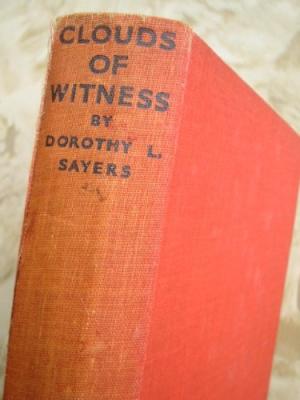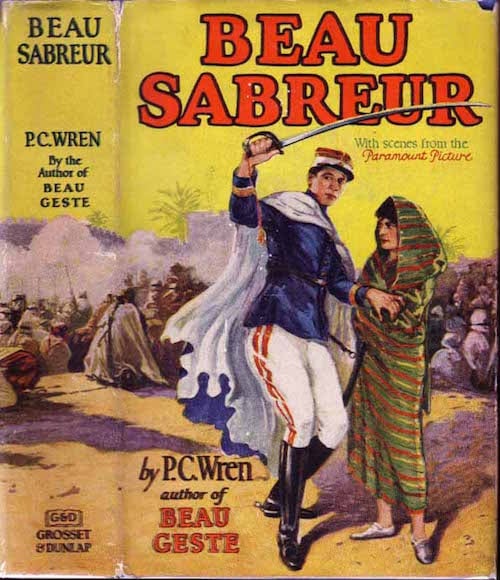10 Best Adventures of 1926
By:
March 15, 2016
Ninety years ago, the following 10 adventures — selected from my Best Twenties Adventure list — were first serialized or published in book form. They’re my favorite adventures published that year.
In no particular order…
- Agatha Christie’s crime adventure The Murder of Roger Ackroyd. In his third outing, retired detective Hercule Poirot — a short, mustachioed, bombastic and egocentric Belgian — has come to roost in a sleepy English village, where he intends to grow perfect vegetable marrows (that is, squashes). When his neighbor, Roger Ackroyd, is murdered, Poirot promises his niece that he’ll ferret out the killer. Ackroyd’s friend Dr. James Sheppard, the novel’s narrator, assists Poirot’s investigation — for example, by inquiring into the private life of parlourmaid Ursula, who has no alibi. Everyone in Ackroyd’s household, it seems — Mrs Cecil Ackroyd, Roger Ackroyd’s widowed sister-in-law; Flora, Ackroyd’s niece; Ralph Paton, Ackroyd’s stepson; Ursula, who is secretly married to Ralph; Hector Blunt, Ackroyd’s house guest; Geoffrey Raymond, Ackroyd’s secretary — has something to conceal from Poirot. Whodunnit? The novel’s startling final plot twist was innovative and much-admired at the time. Fun fact: The British Crime Writers’ Association voted The Murder of Roger Ackroyd the best crime novel ever. Literary critic Edmund Wilson felt differently; he titled an essay critical of most detective fiction, “Who Cares Who Killed Roger Ackroyd?”
- Brian Oswald Donn-Byrne’s Hangman’s House. Written in the years immediately following the establishment of the Irish Free State, which ended the three-year Irish War of Independence between the forces of the self-proclaimed Irish Republic, the IRA, and British Crown forces, Hangman’s House romanticizes an Ireland — feudal, pastoral, mystical — which the author, an Irish emigrant to New York and then England, feared was passing away. A tale of fox hunting and horse racing, it concerns an exiled Irish patriot who returns from the Foreign Legion in order to kill the rogue responsible for his sister’s suicide. Meanwhile, the daughter of a judge known as the Hangman is forced to marry the same rogue. When the exiled patriot threatens the rogue, he is sent to prison… “I have written a book of Ireland for Irishmen,” the author announced in the book’s preface. Fun fact: Donn Byrne, as he was known, was one of the most successful Irish-American novelists of the early 20th century. This novel was adapted, in 1928, as a silent film directed by John Ford. John Wayne makes a brief appearance, in a steeplechase scene — his first John Ford movie.
- E.R. Eddison’s atavistic adventure Styrbiorn the Strong. In the 10th century, Styrbjörn Olafsson, heir to one-half the Swedish throne, was known both for his remarkable size and strength and for his quarrelsome and rather dim-witted, though good-hearted nature. Shooed out of Sweden by his uncle, Eric the Victorious, who insisted that Styrbiorn demonstrate some maturity before he assume his late father’s place in the kingdom, Styrbiorn becomes the leader of the Jomsvikings before attempting to overthrow his uncle in the Battle of Fýrisvellir. Eddison’s retelling of this minor Norse saga is exciting and fun — if a bit heavy going at times, because of the archaic language which the author deploys to somewhat better effect in The Worm Ouroboros (1922) and the Zimiamvian Trilogy (1935–58). After a dramatic shipboard duel, Styrbiorn becomes a leader among the Vikings. Returning to Sweden before his three years are up, he winds up in bed with his uncle’s wife, Sigrid the Haughty… who persuades Eric to exile Styrbiorn and deny him his birthright. Fun fact: There are no words derived from Latin or Greek in Styrbiorn the Strong.
- B. Traven’s sea-going adventure Das Totenschiff (Death Ship; English translation, 1934). When his ship leaves without him, Gerard Gales, an American merchant seamen, finds himself stranded in Antwerp without passport or working papers. He is repeatedly arrested and deported from one country to another, until — broke and desperate — he finds work on a decrepit cargo ship crewed entirely by undocumented, exploited workers from around the world. Soon enough, he realizes that the Yorikke is a “death ship” — a boat so decrepit that it is worth more to its heartless owners overinsured and sunk than afloat. Despite the squalor of their living and working conditions, and the possibility of starvation or death, the ship’s crew embrace their situation with admirable courage and resilience. A fiery critique of, first, bureaucratic authority and, later, abusive labor practices. Fun fact: “B. Traven” was the pseudonym of a German novelist who — one assumes, based on the plots of his other books, including The Treasure of the Sierra Madre (1927) — spent some years living in Mexico. Many believe that Traven was Ret Marut, a German stage actor and anarchist, who reportedly left Europe for Mexico around 1924.
- Nevil Shute’s crime/hunted-man adventure Marazan. When Philip Stenning, a commercial pilot and would-be adventurer, crashes his plane in a field while flying solo, a man in prison garb — Dennis Compton — emerges from the woods, saving his life. Stenning repays the favor by helping Compton avoid recapture. Compton’s half-brother, it turns out, is smuggling drugs into England; it was he who framed Compton for a crime he didn’t commit. Stenning offers to help Compton break up the drug ring… and in the process, he begins to fall in love with Compton’s cousin, Joan. For fans of aeronautical and nautical yarns: In addition to some exciting flying, there are some dramatic sailing scenes, too. Fun fact: The first published novel by the author of several of my all-time favorite adventures, including An Old Captivity (1940), Pied Piper (1942), A Town Like Alice (1950), Round the Bend (1951), and On the Beach (1957). PS: Check out that far-out cover illustration!
- C.S. Forester’s crime adventure Payment Deferred. In this early effort by the author of the Horatio Hornblower series and The African Queen, William Marble, a London bank clerk desperately worried about his family’s finances, is presented with an opportunity when a nephew carrying a large amount of cash drops by unexpectedly. Speculating with his ill-gotten gains, Marble makes a fortune in the foreign currency market — at which point his family wants to move to a new home. But Marble can’t leave… because his nephew is buried in the garden! What will happen when his wife realizes the truth? Something terrible! Fun fact: Payment Deferred was overshadowed, in the year of its publication, by Agatha Christie’s much-discussed The Murder of Roger Ackroyd. Today, it is almost entirely fogotten. Adapted in 1931 as Broadway play, and in 1932 as a movie. Both starred Charles Laughton.
- Dorothy L. Sayers‘s Lord Peter Wimsey crime adventure Clouds of Witness. The brilliant, dilettantish, war-damaged Lord Peter Wimsey travels to his brother Gerald’s North Yorkshire shooting lodge — because Gerald, the Duke of Denver, has been accused of murdering their sister’s fiancé, Cathcart. Their sister, Lady Mary, also falls under suspicion. Cathcart was killed by a bullet from Denver’s revolver, and Denver’s only alibi is that he was out for a walk; he had quarreled, that evening, with the victim. Wimsey and his friend, Inspector Parker of Scotland Yard, discover: footprints belonging to a man who wasn’t among Gerald’s guests (and who turns out to be Mary’s secret fiancé, a radical Socialist agitator), motorcycle tracks, and a jeweled charm in the shape of a cat. Wimsey stumbles into a bog pit… will he survive? Fun facts: This whodunnit, the second outing for Sayers’s Lord Peter Wimsey character, an archetype for the British gentleman detective, was preceded by Whose Body? (1923) and followed by Unnatural Death (1927). Published in the US as Clouds of Witnesses.
- Talbot Mundy’s frontier/occult adventure The Devil’s Guard (also known as Ramsden). From 1922–1932, Talbot Mundy serialized several yarns — in the pulp magazine Adventure — about James Grim, an adventurer known as “Jimgrim.” Unlike Rider Haggard’s and Kipling’s imperialist protagonists, as an American, Jimgrim believes in self-rule for colonized countries; he is particularly committed to Arab independence. Having left the British service to form the agency of Grim, Ramsden, and Ross, he devotes himself to doing good in Egypt, then India and the Far East. In The Devil’s Guard, Jimgrim & co. go to Tibet searching for the legendary Sham-bha-la. Along the way, he encounters adepts from two mystical orders — a White Lodge devoted to good, and a Black Lodge devoted to evil. An adventure of the soul, the story involves both a grueling journey through the Himalayas and a quest for ancient spiritual wisdom. Fun fact: The Devil’s Guard, which directly inspired the Black Lodge/White Lodge mythos of Twin Peaks, is part of a tetralogy that began with Caves of Terror (1922), continued with The Nine Unknown (1923) and would end in 1930 with Jimgrim. There are also a number of Jimgrim short stories. Mundy, a Theosophist, has been called “the philosopher of adventure.”
- P.C. Wren’s French Foreign Legion adventure Beau Sabreur. A swashbuckling sequel to 1924’s Beau Geste, narrated by Major Henri de Beaujalais of the Spahis, who led the relief column at Fort Zinderneuf in the previous story. Here, we discover what happened to Hank, a scapegrace American who, at the end of Beau Geste, has disappeared into the desert; and to Buddy, another American, who had remained in Africa to search for Hank when the last surviving Geste, John, went back to England. De Beaujalais recounts his adventures as a member of the French Secret Service, his love affair with a beautiful American girl, and his flight with her across the desert. Romance, plenty of action, plus a bloody Arab uprising led by… two mysterious men. The second half of the book deconstructs the first half, in a comical, almost Wodehousian manner. Fun fact: Adapted in 1928 as a silent film — now lost — starring Gary Cooper.
- Edgar Rice Burroughs’s The Moon Maid (1926). A sprawling saga that gallops from Julian 5th’s crash-landing on the moon, where he makes a daring getaway (with a moon maid in tow) from subhuman Kalkars who dwell in the asteroid’s hollow interior; to the same Julian’s doomed effort to defeat a Kalkar invasion of Earth; to Julian 9th’s failed but inspiring rebellion against the mongrel descendants of the Moon Men, communistic tyrants who’ve presided over the Earthlings’ regression to a medieval agrarian lifestyle; to the final triumph of Red Hawk (Julian 20th), the leader of a primitive tribe of freedom-fighters — who, 400 years after the invasion, defeats humankind’s overlords in a pitched battle set in the ruins of Los Angeles. Fun fact: The Julian 9th story, one hears, was originally written after the Bolshevik revolution, and was rejiggered later to fit into the Moon Maid saga. Reissued by Bison Frontiers of Imagination.










Let me know if I’ve missed any 1926 adventures that you particularly admire.
